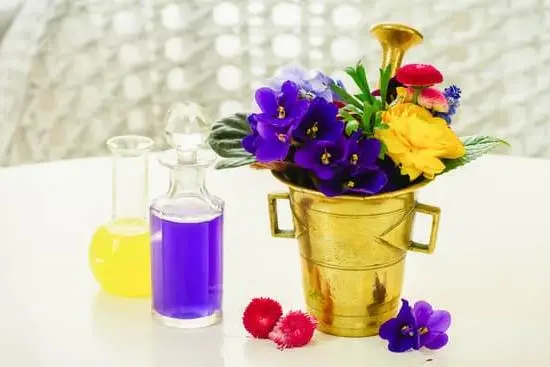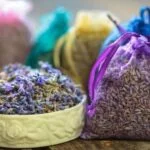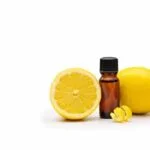Aromatherapy, an alternative medicine practice, has gained significant popularity in recent years for its potential therapeutic benefits. The use of natural ingredients such as essential oils, carrier oils, herbs, and floral waters is central to the practice of aromatherapy. This article will explore the concept and history behind aromatherapy, as well as provide a detailed breakdown of commonly used aromatherapy ingredients.
Aromatherapy involves the use of natural plant extracts to promote physical and psychological well-being. The practice dates back thousands of years and has been utilized in various cultures around the world for its medicinal properties. Today, aromatherapy continues to be embraced as a holistic approach to health and wellness.
Understanding the science behind aromatherapy ingredients is also important in order to grasp their potential benefits. Research has shown that certain essential oils and other aromatherapy ingredients can have a positive impact on mental and emotional health, as well as physical ailments. In this article, we will delve into the scientific evidence supporting these claims while exploring the wide range of benefits that aromatherapy ingredients offer.
Understanding Aromatherapy Ingredients
Aromatherapy ingredients play a crucial role in the practice of aromatherapy, a holistic healing treatment that uses natural plant extracts to promote overall well-being. In this section, we will delve into the detailed breakdown of the most commonly used aromatherapy ingredients, including essential oils, carrier oils, herbs, and floral waters.
Essential Oils
Essential oils are highly concentrated plant extracts that capture the aromatic compounds of various plants. These potent oils are extracted through methods such as steam distillation or cold pressing and are known for their therapeutic properties. Each essential oil has its own unique benefits and uses, whether it’s for calming the mind and relieving stress (lavender oil), boosting energy and focus (peppermint oil), or supporting respiratory health (eucalyptus oil).
Carrier Oils
In aromatherapy, carrier oils act as a base for diluting essential oils before applying them to the skin. Common carrier oils include jojoba oil, coconut oil, sweet almond oil, and grapeseed oil. These non-fragrant oils help to “carry” the essential oils onto the skin while also moisturizing and nourishing it. They serve as an important medium for topical application of essential oils.
Herbs and Floral Waters
Apart from essential and carrier oils, herbs and floral waters also form an integral part of aromatherapy practices. Herbs like chamomile, rosemary, and peppermint are often used in the form of dried herbs or herbal infusions for their aromatic and therapeutic properties. Floral waters, also known as hydrosols, are the by-product of steam distillation used to extract essential oils from plants. They have similar therapeutic benefits as their essential oil counterparts but in milder concentrations.
Understanding these commonly used aromatherapy ingredients is fundamental to practicing aromatherapy effectively and safely. It is important to be knowledgeable about how each ingredient works and their potential impact on mental and physical well-being when incorporating them into your wellness routines.
The Science Behind Aromatherapy Ingredients
Aromatherapy has gained popularity as a holistic healing treatment that utilizes natural plant extracts to promote physical and mental well-being. The use of aromatherapy ingredients dates back thousands of years, with ancient civilizations recognizing the therapeutic properties of plant-derived oils and herbs. Modern scientific research has further validated the effectiveness of aromatherapy ingredients in providing various health benefits.
Impact on Mental Well-Being
Numerous studies have demonstrated the positive effects of aromatherapy ingredients on mental health. Aromatherapy essential oils like lavender, bergamot, and chamomile have been found to reduce anxiety, stress, and improve mood. These essential oils can be diffused or used in massage therapy to create a calming atmosphere and induce relaxation.
Physical Health Benefits
In addition to mental well-being, aromatherapy ingredients also offer physical health benefits. Essential oils such as peppermint, eucalyptus, and tea tree oil have powerful antimicrobial properties that can support the immune system and help fight off infections. Moreover, certain essential oils possess analgesic properties that can alleviate pain and inflammation when used in topical applications or during massage therapy.
Evidence-Based Research
Scientific research has shown promising results in supporting the claims of aromatherapy’s effectiveness. Studies have indicated that inhaling essential oils can impact the limbic system of the brain, which is responsible for emotions, behavior, motivation, and long-term memory. This suggests that the aromatic compounds in essential oils may have a direct influence on mood regulation and emotional well-being.
Overall, the scientific evidence supporting the effectiveness of aromatherapy ingredients for promoting mental and physical well-being continues to grow. While more research is needed to fully understand the mechanisms behind these benefits, there is a wealth of evidence that underscores the potential health-enhancing properties of natural aromatherapy ingredients.
Benefits of Aromatherapy Ingredients
Aromatherapy ingredients have been used for centuries to promote mental and physical well-being. One of the primary benefits of aromatherapy ingredients is stress relief. Essential oils such as lavender, chamomile, and eucalyptus are known for their relaxing properties, helping to reduce stress and anxiety. Inhaling the aroma of these oils can have a calming effect on the mind and body, making them ideal for use in a diffuser or during a relaxing bath.
In addition to stress relief, aromatherapy ingredients are also widely used for relaxation purposes. Scents like bergamot, rose, and sandalwood are popular choices for promoting relaxation and creating a peaceful atmosphere. These essential oils can be diffused in the home or added to massage oils to help induce a state of tranquility and calmness.
Improved sleep is another significant benefit of using aromatherapy ingredients. Essential oils like lavender, cedarwood, and ylang-ylang are known for their sedative effects, making them effective aids in promoting better sleep quality. Research has shown that inhaling these soothing scents before bedtime can help improve sleep duration and overall sleep quality.
| Benefits | Aromatherapy Ingredients |
|---|---|
| Stress Relief | Lavender, Chamomile, Eucalyptus |
| Relaxation | Bergamot, Rose, Sandalwood |
| Improved Sleep | Lavender, Cedarwood, Ylang-Ylang |
How to Use Aromatherapy Ingredients
Aromatherapy ingredients can be easily incorporated into daily life to reap their therapeutic benefits. Here are some practical tips and methods for using aromatherapy ingredients in various ways:
- Diffusing Essential Oils: One of the most popular methods for using aromatherapy ingredients is through diffusing essential oils. This can be done through a variety of devices such as diffusers, oil burners, or even adding a few drops to a bowl of hot water. Different essential oils have different effects, so it’s important to choose the right ones based on your needs, whether it’s for relaxation, energy boost, or stress relief.
- Creating DIY Beauty Products: Aromatherapy ingredients can also be used to create natural and fragrant beauty products at home. For example, adding a few drops of lavender essential oil to unscented body lotion can create a calming and moisturizing lotion. Additionally, mixing essential oils with carrier oils like coconut or jojoba oil can create personalized massage oils or facial serums.
- Using Them in Massage Therapy: Aromatherapy ingredients are commonly used in massage therapy to enhance the overall experience and promote relaxation. By diluting essential oils with carrier oils and applying them during massages, individuals can benefit from both the physical touch and the aromatic properties of the oils for a more holistic healing experience.
Incorporating aromatherapy ingredients into daily life does not have to be complicated; simple methods like these can help individuals experience the therapeutic effects of these natural substances. Whether it’s through diffusion, creating DIY beauty products, or using them in massage therapy sessions, the versatility of aromatherapy ingredients allows for multiple applications based on individual preferences and needs.
By exploring these various methods of incorporating aromatherapy ingredients into daily routines, individuals can discover which applications work best for them personally and begin to integrate these natural remedies seamlessly into their lifestyles.
Safety Precautions and Considerations
Aromatherapy ingredients are natural, plant-derived substances that are used for their therapeutic properties. While they can offer a wide range of benefits, it is essential to understand the potential risks and contraindications associated with their use. Just like any other form of natural medicine, aromatherapy should be approached with caution and proper knowledge to ensure safe usage and avoid potential adverse effects.
One important consideration when using aromatherapy ingredients is the risk of allergic reactions. Essential oils, in particular, are highly concentrated substances that can cause skin irritation or trigger allergic responses in some individuals. It is crucial to perform a patch test before applying any essential oil to the skin, especially if you have sensitive skin or a history of allergies.
In addition to allergic reactions, there are certain essential oils that should be avoided altogether in specific situations. For example, pregnant women should steer clear of certain essential oils as they may pose risks to both the mother and the developing fetus. Similarly, individuals with certain medical conditions such as asthma or epilepsy should consult with a healthcare professional before using aromatherapy ingredients to ensure safety.
Another important aspect of using aromatherapy ingredients safely is proper dilution and dosage. Essential oils are highly potent and should never be applied directly to the skin without dilution. Carrier oils such as coconut oil or jojoba oil can be used to dilute essential oils and reduce the risk of skin irritation. Furthermore, following recommended dosage guidelines for each essential oil is crucial to avoid adverse effects.
These safety precautions and considerations are crucial for anyone interested in incorporating aromatherapy ingredients into their daily lives. By being mindful of potential risks and contraindications, individuals can enjoy the numerous benefits of aromatherapy without compromising their well-being.
| Risk | Consideration |
|---|---|
| Allergic Reactions | Performing patch tests before use; avoiding certain oils for pregnant women or individuals with specific medical conditions |
| Skin Irritation | Properly diluting essential oils with carrier oils; following recommended dosage guidelines |
Choosing Quality Aromatherapy Ingredients
When it comes to aromatherapy, the quality of the ingredients used is crucial in determining the effectiveness of the therapy. With the growing popularity of aromatherapy, there is a wide variety of aromatherapy ingredients available in the market. However, not all products are created equal, and it is important for consumers to be well-informed on how to choose high-quality, pure, and authentic aromatherapy ingredients.
To ensure that you are getting the best possible aromatherapy ingredients, here are some tips for selecting and purchasing them:
- Check for purity and authenticity: Look for essential oils and other ingredients that are labeled as “100% pure” or “therapeutic grade.” Avoid products that contain synthetic additives or fillers.
- Research reputable brands: Do some research on trusted and reputable aromatherapy ingredient brands. Read customer reviews and look for certifications such as USDA organic or certified organic by a recognized certification body.
- Consider extraction methods: Different extraction methods can affect the quality of essential oils. Look for ingredients that have been extracted using methods such as steam distillation or cold-pressing, which help preserve the natural properties of the plants.
By following these guidelines, you can be confident that you are purchasing high-quality aromatherapy ingredients that will maximize their therapeutic benefits. Investing in pure and authentic ingredients will not only enhance your overall aromatherapy experience but also ensure that you are getting the most out of their healing properties.
It is also important to note that while high-quality aromatherapy ingredients may come with a higher price tag, they are worth the investment in order to reap the full benefits of aromatherapy. Remember that when it comes to your health and well-being, quality should always take precedence over cost.
Aromatherapy Recipes and Blends
In conclusion, aromatherapy ingredients have been used for centuries to promote overall well-being and improve mental and physical health. The therapeutic benefits of essential oils, carrier oils, herbs, and floral waters are supported by scientific research, making them valuable tools for stress relief, relaxation, improved sleep, and mood enhancement. The use of aromatherapy ingredients in daily life can be easily incorporated through various methods such as diffusing essential oils, creating DIY beauty products, and incorporating them into massage therapy.
It is important for individuals to understand the safety precautions and considerations when using aromatherapy ingredients. Potential risks and contraindications should be taken into account, along with guidelines for safe usage and dosage. Additionally, choosing high-quality, pure, and authentic aromatherapy ingredients is crucial to maximize their therapeutic benefits. By educating themselves on how to select and purchase quality ingredients, individuals can ensure they are reaping the full advantages of aromatherapy.
Furthermore, readers can benefit from simple yet effective aromatherapy recipes and blends that they can easily create at home. Whether it’s a relaxing essential oil blend for a diffuser or a soothing bath soak using floral waters and herbs, incorporating these recipes into daily routines can enhance the overall well-being of individuals.
Ultimately, the widespread availability and versatility of aromatherapy ingredients allow people to unlock their potential for improving physical health while also providing emotional support in today’s fast-paced world.
Frequently Asked Questions
Are There Any Negative Effects to Aromatherapy?
There can be negative effects to aromatherapy, especially if not used properly. Some essential oils can cause skin irritation or allergic reactions, and others may be harmful if ingested. It’s important to use caution and follow proper guidelines when using aromatherapy.
Is There Any Science Behind Aromatherapy?
Yes, there is some science behind aromatherapy. Studies have shown that certain essential oils can have a positive impact on mood, stress levels, and even some physical symptoms. While more research is needed, there is evidence to support the potential benefits of aromatherapy.
Who Should Avoid Aromatherapy?
Certain individuals should avoid aromatherapy, particularly those who are pregnant or breastfeeding. Children and pets may also be sensitive to certain essential oils, so it’s important to use caution when using them around these groups. People with respiratory conditions or allergies should also approach aromatherapy with care.

Are you looking for a natural way to improve your health and wellbeing?
If so, aromatherapy may be the answer for you.



